Old Bakery, 58 Black Street, Martham
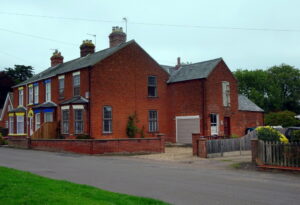
This house is not as old as many in the village but has an interesting pedigree because, as its name implies, it was run for over 50 years as a bread bakery by William Arthur Rigg who lived there with his wife, Rosa and their three children.
No 58 is only part of our story as it forms a terrace with Nos. 60 and 62 and they are joined in more ways than just bricks and mortar. Taking this into account we should perhaps start long before they were all built. Before William Rigg came along the land that 58, 60 & 62 were built on was owned by Martha Easter Woods (1818-1899) whose maiden name was Kirby. She had married Nicholas Woods (1807-1887) on 27th January 1840 at Tunstead, Norfolk.
The 1842 Martham Tithe Award lists Nicholas as the owner of plots 346 & 347 as shown on the map below. The listing that goes with the map gives the description of plot 346 as a “house & yard cultivated as arable” and 347 as a “house as garden cultivated as pasture”. Dwellings are normally shown in pink on tithe maps with barns, stables, workshops and outhouses etc outlined but not coloured in. Despite the descriptions being at odds with the map it is almost certain that the buildings there supported his work as a wheelwright.
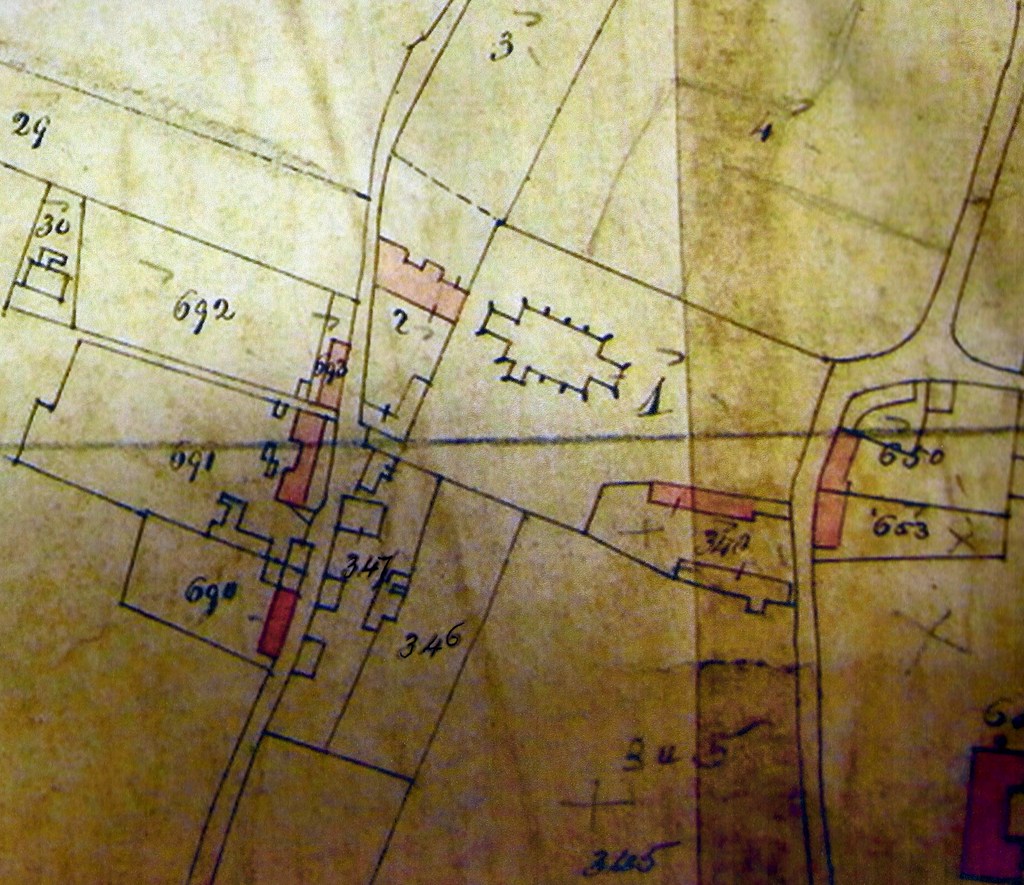
In 1842 the land that Nos 58, 60 & 62 would later be built on had been in the ownership of the Woods family for at least three generations. Whilst Nicholas was a wheelwright his father, William (1764-1830) was a carpenter there. In fact, William is listed in the 1812 Martham Inclosure Award as being the owner of the land that covers both our terrace and adjacent land that runs up to the southern boundary of St Mary the Virgin Church. This included the house that later became known as Fairview Cottage or a dwelling that preceded it.
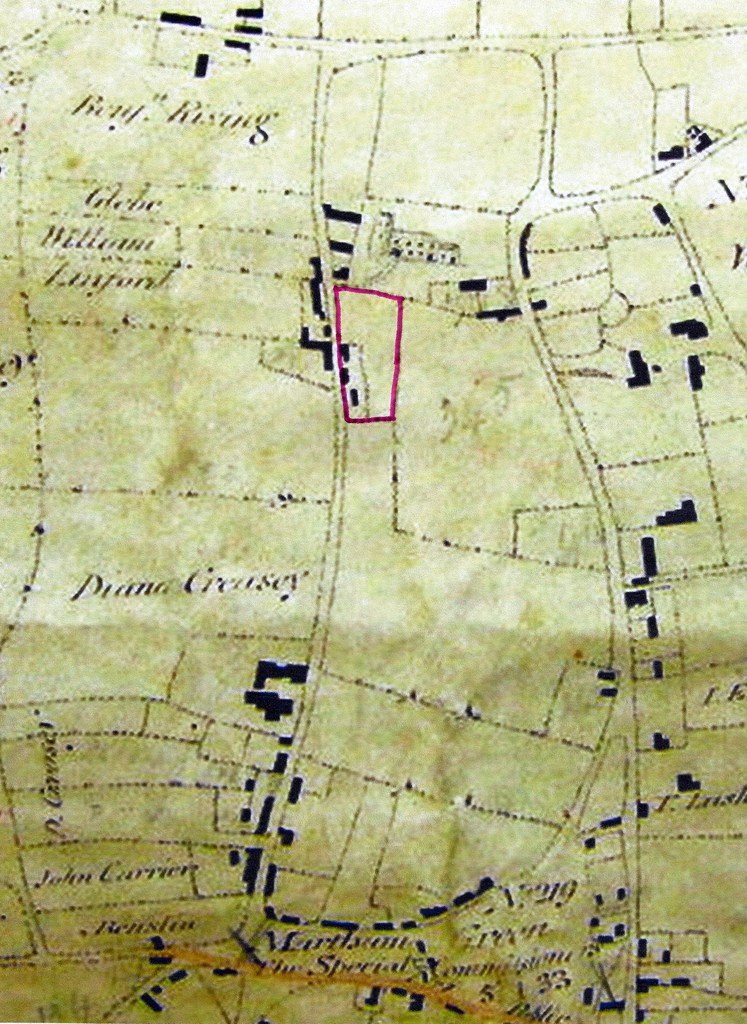
Nicholas was born in about 1807 in Martham as one of at least eight children of William Woods & Ann, nee Harboard. He was baptised on 25th November 1807 at St Mary the Virgin. When he was 26, he married his first wife at St Mary the Virgin on 26th November 1833. She was Rachael Barber the daughter of George Barber & Elizabeth, nee Creasey. George was a prominent farmer in the village and at one time lived in a house in White Street where the Countryside Collection used to be. Rachel died in 1839 aged only 27. Nicholas married Martha Easter Kirby only a year later at Tunstead, Norfolk. Every census from 1851 to 1871 listed Nicholas & Martha as living at Black Street where he was a wheelwright although he was blind from 1863 onwards. He died on 5th December 1887. Nicholas did not have any children with either Rachel or Martha. Martha inherited his whole estate. Some local people will now realise that it was her inheritance that gave rise to the Kirby family living and trading at Black Street as blacksmiths, wheelwrights, timber merchants and haulage contractors but that is another story you can read about by clicking HERE.
Martha agreed to sell the land to William Rigg on 9th September 1895 and the deeds for No58 make it clear that Nos 58, 60 & 62 had been built by 4th April 1899. It seems that William had borrowed £600 to pay for, or help pay for, the building costs. All three houses were completed between 1895 and 1899.
Nicholas and both his wives are buried at St Mary the Virgin and these are their gravestones:
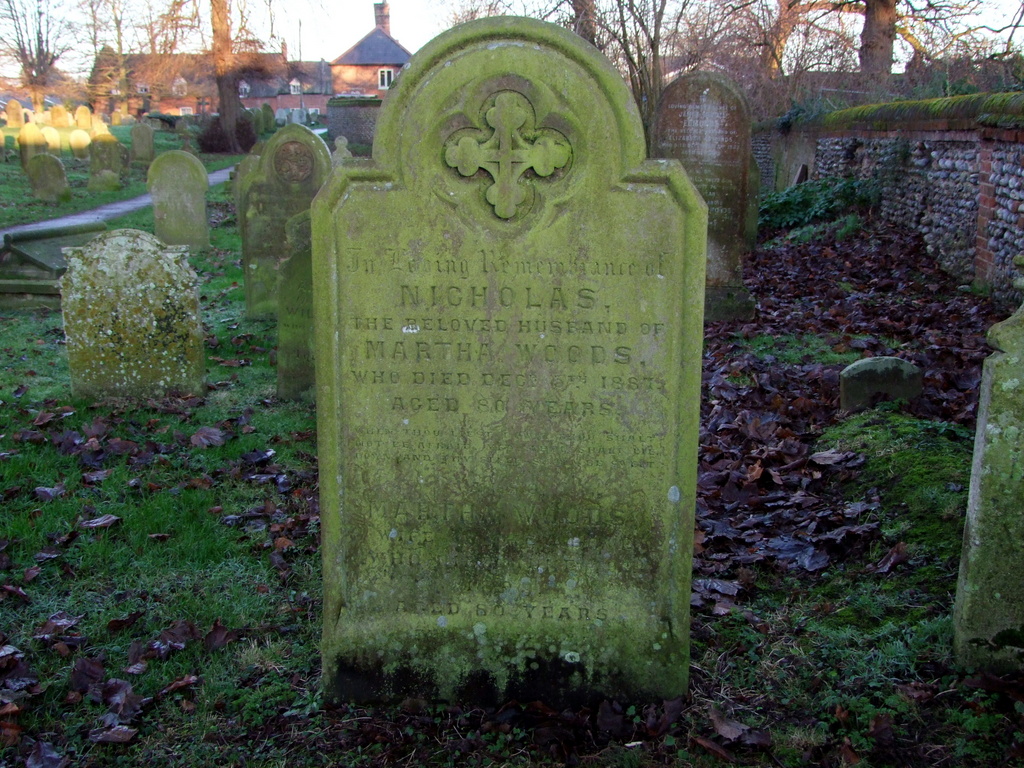
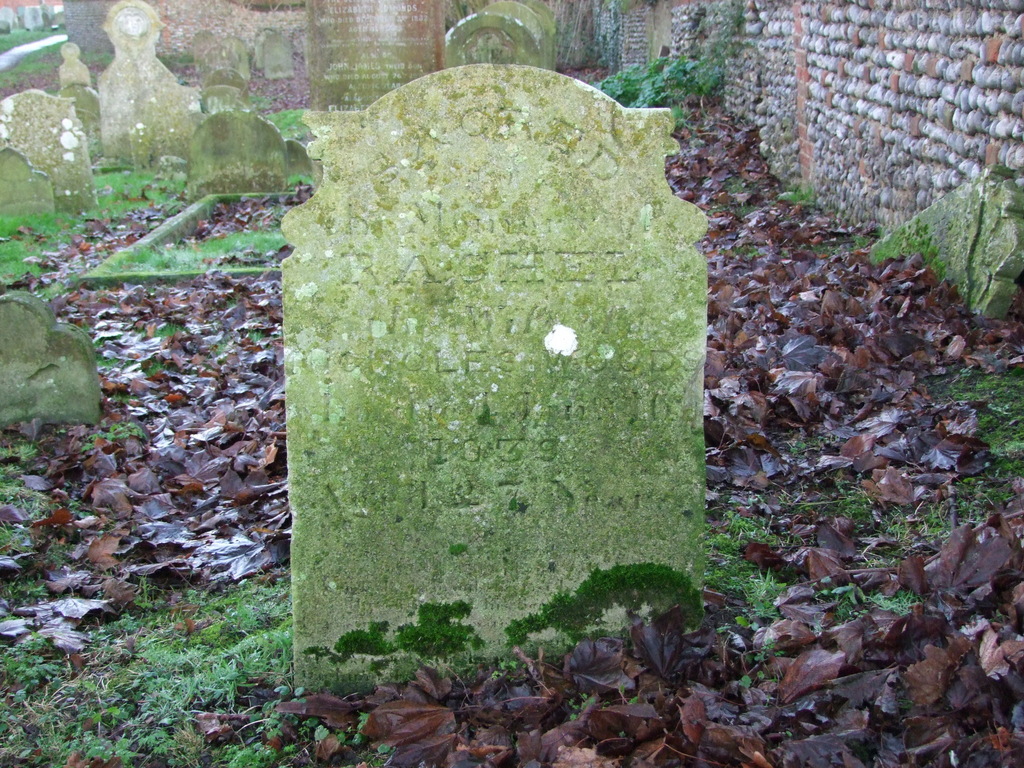
William Arthur Rigg was born on 29th July 1858 in Norwich. He came from a fairly humble background and his parents were Samuel Rigg & Sarah, nee Mountain. He grew up living with his parents at Bull Close in Norwich where his father worked as a shawl clipper in the Norwich wool trade. When he was 27, in 1885, he married Rosa Elizabeth Ann Bell at Great Yarmouth and by 1891 they already lived at Black Street where he was a self-employed baker. At this stage he had not purchased the land from Martha Woods so presumably he lived and traded from elsewhere in Black Street. All three of his houses, including the bakery, were built between 1895 and 1899. By that time William & Rosa had had twin girls that they called Ivy and Olive. They were born on 4th September 1893 and perhaps in celebration they named No60 Black Street “Ivy Cottage” and No62 “Olive Cottage”. Both houses retain the same names to this day. A close look at the front of No58 shows that it once had a front door facing onto Black Street like Nos 60 and 62. The door was to the left of the bay window as you look at the house but it was filled in and by about 1915 a new door was built on the south side of the house as can be seen in these two photos that date to that period:
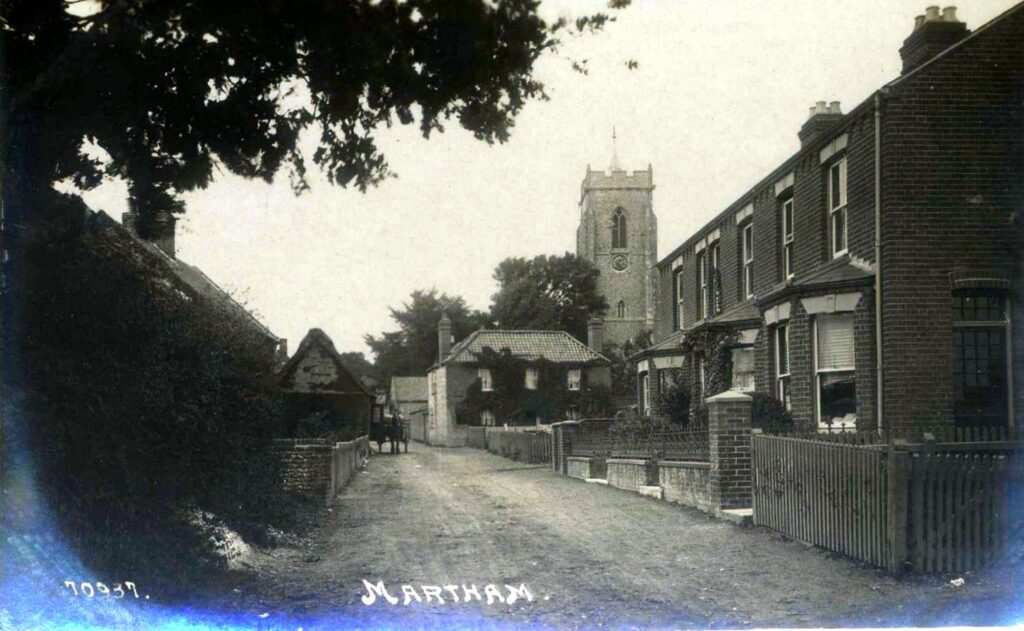
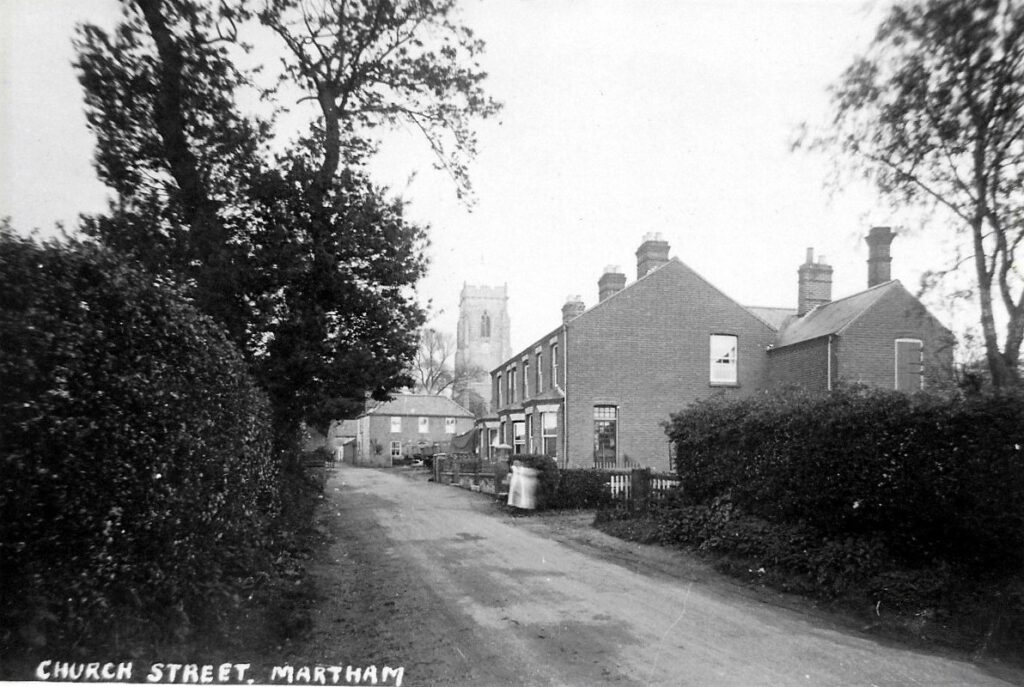
William & Rosa also had a son called William Ewart Rigg who was born on 8th January 1887. He became a chartered accountant and married Grace Marjorie Wadson in 1937 at Great Yarmouth. He served in the 1st World War and died in 1945. His wife died in 1972 and they are both buried at St Mary the Virgin at section H, plot M9 as shown on the right.
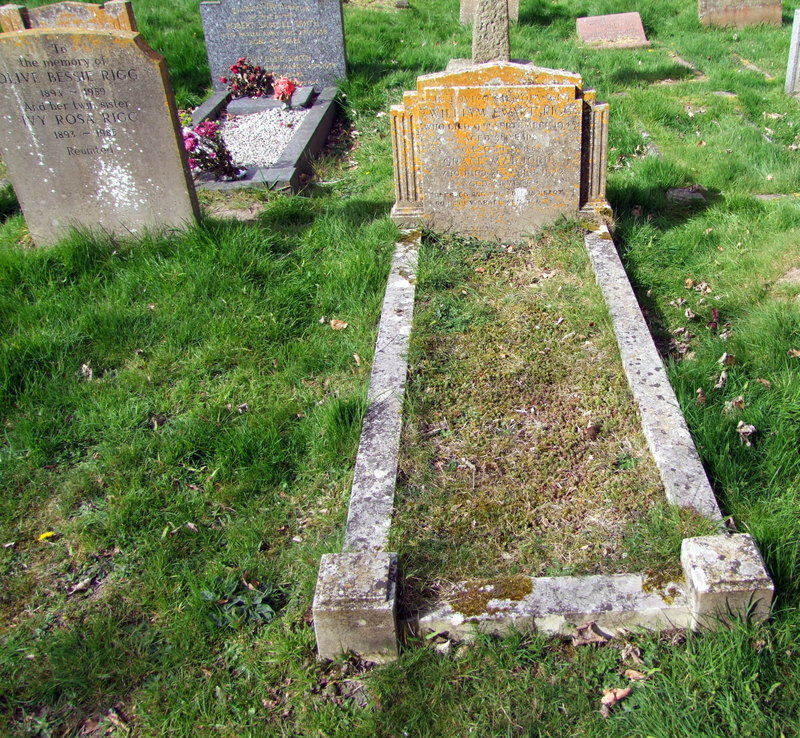
William Snr. must have been particularly successful because as well as being a baker he invested in land and houses. He acquired 225 feet of land from the south of No58 fronting Black Street and also owned a terrace of six houses numbered 63 to 68 Anson Road, Great Yarmouth plus another six numbered 32 to 37 Wolesley Road which are both situated in Southtown.
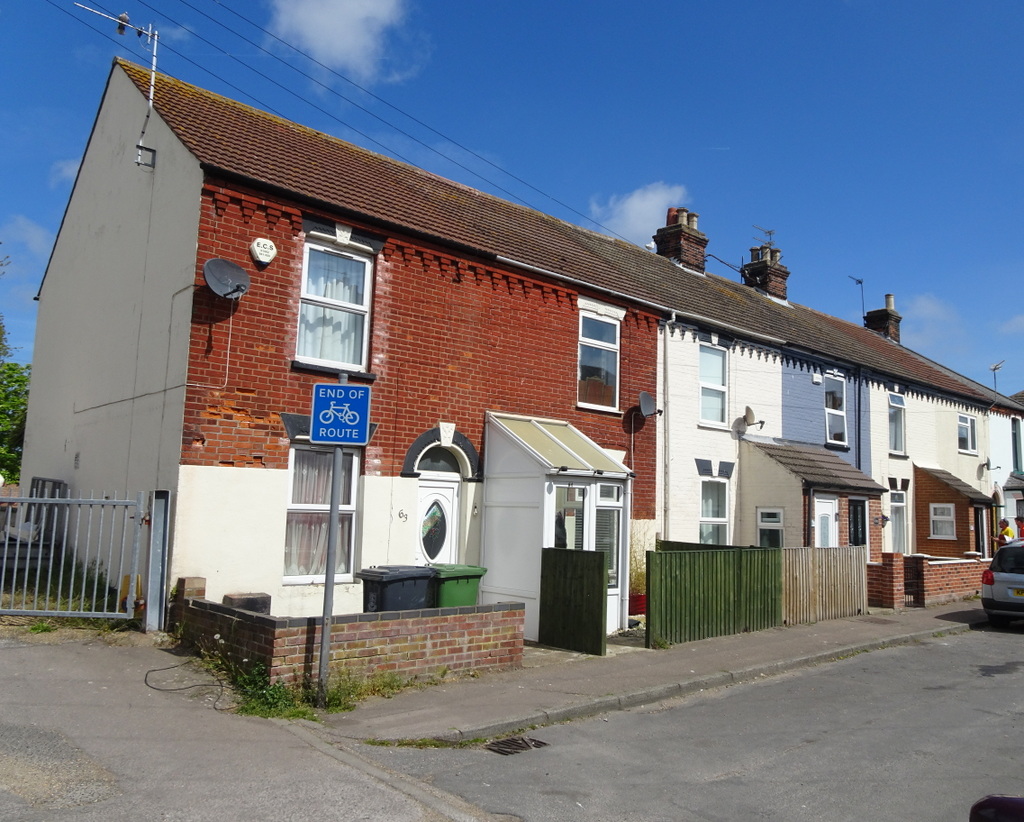
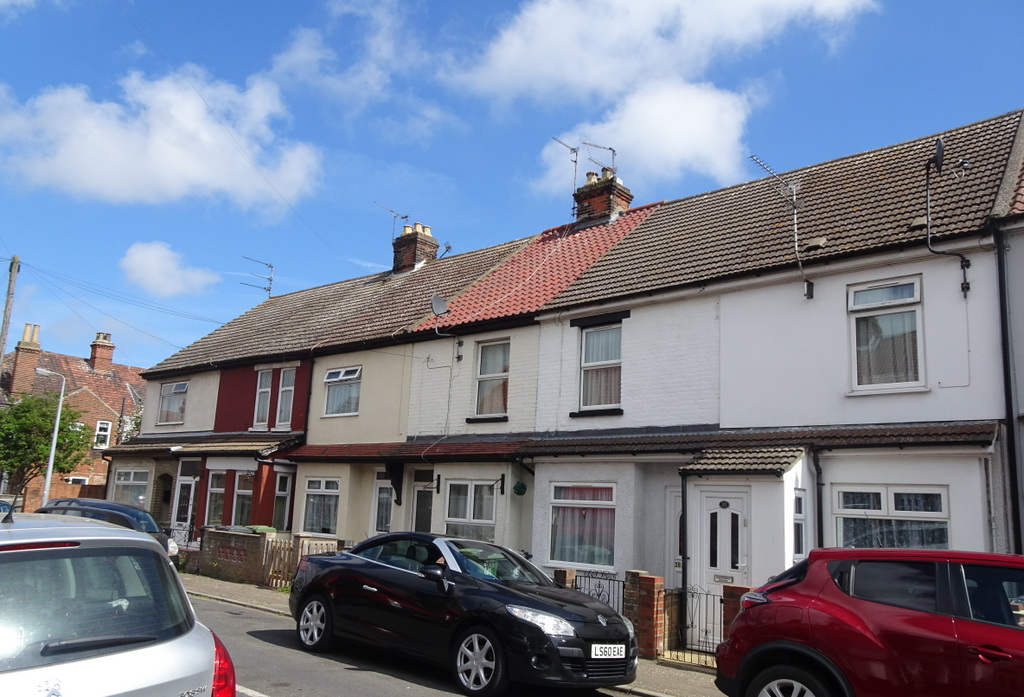

Rosa died on 20th March 1939 and this may have prompted William into making a will which he did on 1st May 1939 leaving all his estate to his twin daughters Ivy & Olive as well as naming them as his executors(1). William lived to a good age of 96 and died on 25th June 1955. William and Rosa were buried together at St Mary the Virgin section H, plot L17.
Following the death of their parents Ivy and Olive continued to live at No58. They were both clerks at a Friendly Society in 1939 but also had the benefit of a private income from the houses in Great Yarmouth that were let. Olive died on 27th December 1959 at Northgate Hospital, Great Yarmouth. She was 66 and she left all her estate to her sister. In 1965 Ivy sold 185 feet of the land fronting Black Street to Charles Munford Ltd. This was on the east side of the street and now has a series of detached bungalows on what was once fields. She also sold Nos 58 & 60 Black Street to the Burlingham Property Co. Ltd. of Lingwood for £1,900 and moved to a bungalow further down Black Street. Ivy died on 24th November 1985 at Annan House Residential Care Home, Stanley Avenue, Norwich, aged 92. Ivy & Olive are buried together at St Mary the Virgin section H, plot M8.

The Burlingham Property Co. set about modernising No58 by improving the kitchen, bathroom and a bedroom as well providing a garage and better access. In 1969 Norfolk County Council made improvements to the frontage of the properties and on 9th June 1969 No58 was sold to John Harold Astley for £3,700. John was married to Gwendoline Mary Dove, of Horsey, but sadly was not at No58 very long as he died on 19th October 1973. The Midland Bank administered his estate and sold the house to David & Tessa Theodore for £8,850 on 27th June 1974. David & Tessa were originally from Norwich. They stayed in Martham for about seven years where David was a teacher at the Primary School before they sold the Old Bakery house to Raymond & Pamela Phillips on 24th June 1981. Raymond & Pamela moved from East Dereham to Martham and lived at No58 for 36 years until eventually selling the house to the present owners in March 2017. Raymond & Pamela had a son who at the age of eleven hid a note under the floorboards of his bedroom which was found by the present owner during renovation work. The note read: “Lewis, aged 11. Old car in Old Bakery garden near manhole buried in the old well”. The new owners explored the garden and sure enough found the time capsule car near the former well. The note was written 35 years ago and Lewis still lives in the village. The new owners plan to present him with the car and invite him round to see the extensive adaptations they have made to the house. The ground floor of the former bake house has been converted and is now part of a splendid full width kitchen/lounge/diner and the former bakery loft has been converted to provide an enlarged bedroom on the first floor. The former garage has been converted into a splendid new entrance with modern toilet and storage facilities, all kept cosy with a new ground source warm air heating system.
A memory from Bertie Murrell in January 2024: The Bakery was what we knew as Billy Riggs he had two daughters who used to sell the bread in his shop. He also had Bob Symonds who used to cycle round the village on a three wheeler bike like the ones they used to sell ice cream from. Jack Hicks lived in the middle cottage and he had a son called Teddy and two daughters; Pam was the younger one and Joyce was the older one. A man called Walter Cunningham lived in the house nearest the church.
My thanks to the present (2023) owners of the property for their considerable help with producing this page.
- Abstract of Title – 007. 30th July 1959. Olive and Ivy Rigg formally transferred ownership (assent) of the three houses, bake house and adjoining land of 225 ft. fronting Black Street to themselves as tenants in common rather than as acting in their capacity as executors to their father’s estate. It is quite normal for personal representatives of a deceased person to do this when they are also the beneficiaries of the same property and land. The assent must be signed by the personal representatives but need not be executed as a deed and it should contain the same information required to be included in a vesting deed.